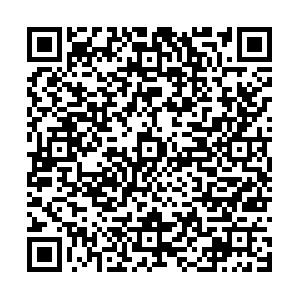Effect of Rolling Direction Reversal on Friction and Wear Behavior of Wheel Steel
-
摘要: 为改善滚动接触条件下车轮钢抵抗磨损的能力,使用滚动接触摩擦磨损试验机,测试了在过渡磨损和稳定磨损阶段改变滚动方向前后试样的摩擦因数和磨损率,使用扫描电镜观察了车轮试样的磨损形貌,使用激光共聚焦显微镜和扫描电镜观察了表层塑性变形形貌.结果表明:不同磨损阶段换向的试样在换向前后摩擦因数均在0.495左右,换向并不改变摩擦副的摩擦因数;试验后在过渡磨损阶段换向的车轮试样磨损率为16.09 g/m,在稳定磨损阶段换向的车轮试样磨损率分别为13.65 g/m和13.94 g/m,过渡磨损阶段换向对车轮试样抗磨损能力的提高程度低于稳定磨损阶段;车轮试样换向前的应变硬化程度越大,换向形成的波状结构的波峰位置越浅,表层组织的珠光体片层间距越小,换向后车轮钢的抗磨损能力提高越明显.Abstract: In order to improve the wear resistance of wheel steel in rolling contact conditions, friction and wear tests were conducted on a rolling-sliding wear test machine to measure the friction coefficients and wear rates of wheel specimens before and after their rolling direction reversal (RDR) at the transition and steady wear states. The surface damages of the wheel specimens were observed by scanning electron microscopy (SEM), and the deformed structures of the wheel specimens were observed by laser scanning confocal microscopy and SEM. The results show that the friction coefficients of the specimens were all around 0.495 before and after RDR, so the RDR has no effect on the friction coefficient of the friction pairs. After test, the wear rate of the wheel specimen whose RDR occurred at the transition state was 16.09 g/m, while the wear rates of the wheel specimens whose RDR occurred at the steady state were 13.65 g/m and 13.94 g/m, respectively, suggesting that the RDR at the transition wear state improves the wear resistance less than that at the steady state. For the wheel specimen with higher strain hardening rate before RDR, the depth of the wavy structure was shallower and the pearlite interlamellar spacing became smaller after wear test, and hence the wear resistance was improved more significantly.
-
Key words:
- wheel steel /
- rolling direction /
- wear state /
- strain hardening /
- wavy structure /
- rolling contact wear
-
TYFOUR W, BEYNON J. The effect of rolling direction reversal on the wear rate and wear mechanism of pearlite rail steel[J]. Tribology International, 1994, 27(6):401-412. DETERS L, PROKSCH M. Friction and wear testing of rail and wheel material[J]. Wear, 2005, 258:981-991. LARI A, KAPOOR A. An investigation to the influence of bogie direction reversal on equalizing rail vehicle wheel wear[J]. Wear, 2008, 265:65-71. TYFOUR W, BEYNON J. The effect of rolling direction reversal on fatigue crack morphology and propagation[J]. Tribology International, 1994, 27(4):273-282. FUJITA K, YOSHIDA Y. The effect of changing rolling direction on the rolling contact fatigue life of annealed and head hardened steel rollers[J]. Wear, 1977, 43:315-327. TYFOUR W, BEYNON J, KAPOOR A. The steady state wear behaviour of pearlitic rail steel under dry rolling-sliding contact conditions[J]. Wear, 1995, 180:79-89. TUNNA J, SINCLAIR J, PEREZ J. A review of wheel wear and rolling contact fatigue[J]. Proceedings of the Institution of Mechanical Engineers, Part F:Journal of Rail and Rapid Transit, 2007, 221:271-289. STRAFFELINIA G, GUILIARIA C, PILLIZZARIA M, et al. Dry rolling-sliding wear of austempered cast iron[J]. Wear, 2011, 271:1602-1608. FRANKLIN F, WIDIYARTA I, KAPOOR A. Computer simulation of wear and rolling contact fatigue[J]. Wear, 2001, 251:949-955. FLETCHER D, BEYNON J. Equilibrium of crack growth and wear rates during unlubricated rolling-sliding contact of pearlitic rail steel[J]. Proceedings of the Institution of Mechanical Engineers, Part F:Journal of Rail and Rapid Transit, 2000, 214:93-105. ARCHARD J F. Wear control handbook:wear theory and mechanisms[M]. New York:ASME, 1980:161-178. SUH N P. An overview of the delamination theory of wear[J]. Wear, 1977, 44:1-6. 郭宁. 桥梁缆索用冷拔珠光体钢丝微观组织表征及力学性能研究[D]. 重庆:重庆大学,2012. 彭超,刘荣运. 钢中珠光体片层间距的割线测量法[J]. 物理测试,1990(5):40-44. PEREZ-UNZUETA A J, BEYNONJ H. Microstructure and wear resistance of pearlitic rail steels[J]. Wear, 1993, 162-164:173-182. -

 点击查看大图
点击查看大图
计量
- 文章访问数: 487
- HTML全文浏览量: 76
- PDF下载量: 300
- 被引次数: 0





 下载:
下载: